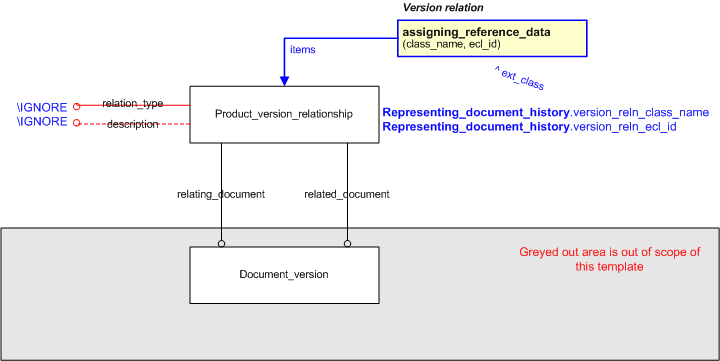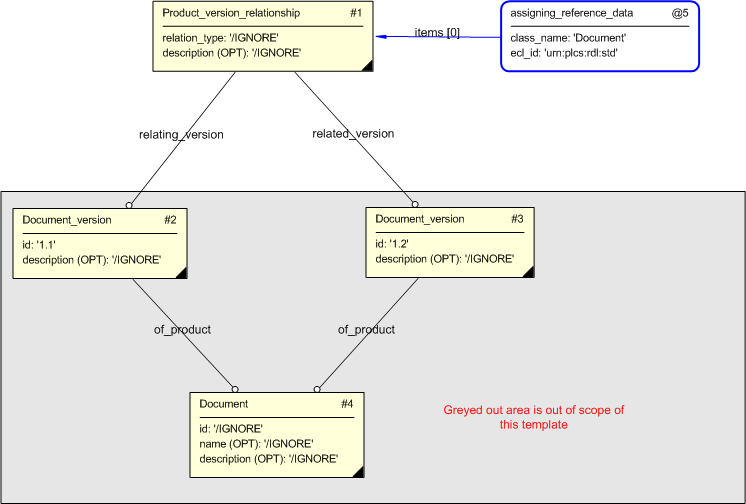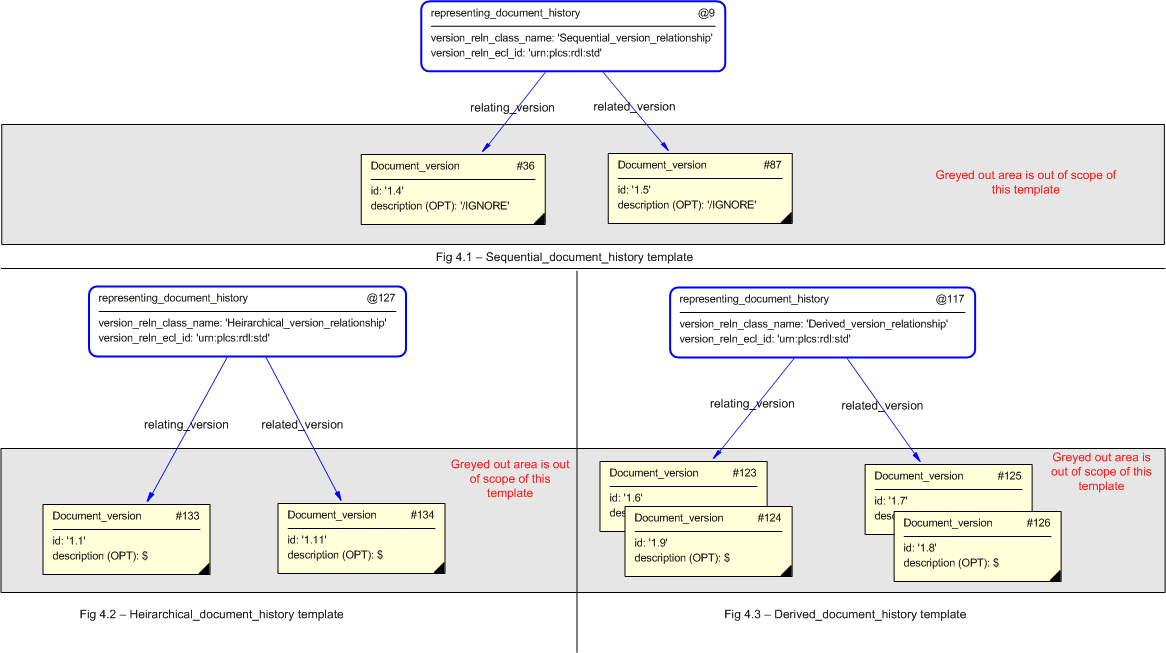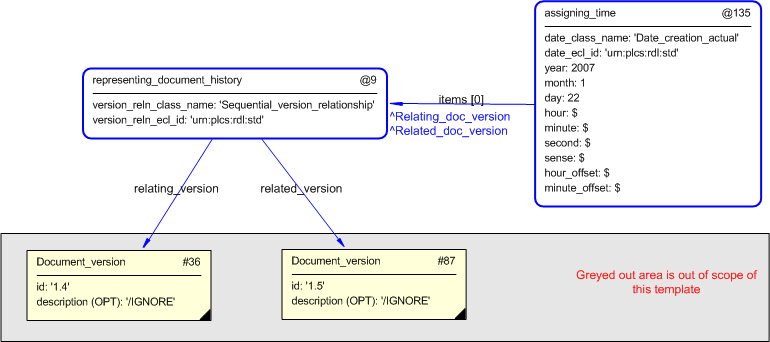
| Template:— representing_document_history (rep_doc_hist) Capability:representing_documents |
Date: 2009/03/18 11:47:46 Revision: 1.4 |
This section specifies the template representing_document_history.
NOTE The template has been defined in the context of the capability representing_documents which provides an overall description of the relevant parts of the ISO 10303-239 information model and a description of related templates.
NOTE An explanation of a template and the associated instantiation path is provided in the Template overview section.
This template describes how to represent the version history of a document. This is primarily achieved through use of the Document_version and Product_version_relationship entities.


target
is the parameter to which the
Document_version
is bound.
target
is the parameter to which the
Document_version
is bound.
| Entity in path | Value | Inherited from |
| Product_version_relationship.relation_type | '/IGNORE' | — |
| Product_version_relationship.description | '/IGNORE' | — |

The instance model in STEP XML exchange file format (ISO 10303 Part 28 ed.2 syntax) is:DATA; #8 = EXTERNAL_CLASS_LIBRARY('urn:plcs:rdl:std',$); #7 = EXTERNAL_CLASS('/IGNORE','Document','/IGNORE',#8); #6 = CLASSIFICATION_ASSIGNMENT(#7,(#1),'/IGNORE'); #4 = DOCUMENT('/IGNORE','/IGNORE','/IGNORE'); #3 = DOCUMENT_VERSION('/IGNORE','/IGNORE',#4); #2 = DOCUMENT_VERSION('/IGNORE','/IGNORE',#4); #1 = PRODUCT_VERSION_RELATIONSHIP('/IGNORE','/IGNORE',#2,#3); ENDSEC;

NOTE this characterization is optional.
Dates and time can be associated with a historical version of a document by using one of the templates assigning_time, or assigning_calendar_date (deprecated).

A creation date is commonly assigned to the template representing_document_history. The date and time assignment is classified as: "Date actual creation" (urn:plcs:rdl:std:Date actual creation) to indicate that it is the date (and time) when the document version was actually created.
© OASIS 2010 — All rights reserved